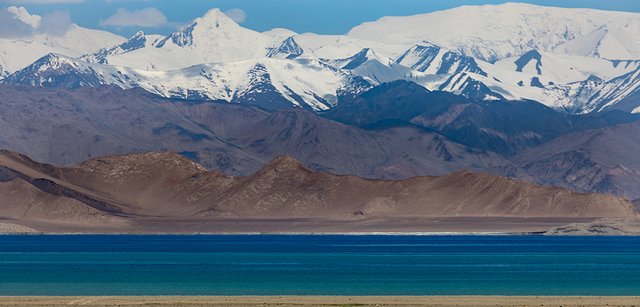Tajikistan's Remarkable Transformation: The Power Plant That Will Leave You Astonished
In March 2024, a group of directors from the World Bank visited the Rogun Hydropower plant in Central Asia. This visit marked the end of the World Bank's support for the project, which had faced many challenges before the first generator was brought online in 2018. However, the dam has received criticism from environmental and humanitarian groups, as well as concerns from neighboring countries like Uzbekistan. Uzbekistan is worried that diverting water from the watershed could harm its cotton industry, even though the Rogun dam is located within Tajikistan and away from international borders.

Despite facing cost issues, the Rogun dam project is crucial for Tajikistan, where more than 90% of electricity comes from hydropower sources.
Tajikistan is a country with a population of around ten million people and is known for its mountainous terrain. The country is divided by the Alay and Palmir mountains and has two main population centers. The first center is in the southwest, where the capital city Dushanbe is located. This region is responsible for much of the country's agricultural output. The second center is based around the city of Khujand in the Fergana Valley, which is a fertile region shared by Tajikistan, Kyrgyzstan, and Uzbekistan. This division was established during the Soviet era to prevent any single power from dominating the area.
Due to the rugged landscape, there are no railway connections between the two population centers. The only significant land route is the RB01 highway that connects Dushanbe and the city of Histevarz. To the east lies Gorno-Badakhshan, a sparsely populated and occasionally restless province with challenging mountainous terrain.
Currently, Tajikistan's economy relies heavily on agricultural and mineral exports. Remittances from Tajiks working abroad contribute significantly to the country's GDP, making it the most remittance-dependent nation in the world. The country has experienced consistent economic growth of over 6% annually since 2000, except during the global financial crisis in 2008 and the COVID-19 pandemic. However, Tajikistan remains relatively poor, with a low GDP per capita of $1,356, similar to the levels before the breakup of the Soviet Union. Urbanization is also low, with only about 27% of the population residing in cities. Since the end of the civil war in 1997, the country has made progress in recovering from the devastating conflict.
The construction of the Rogun hydroelectric plant near the city of Rogun has been underway for several decades. The third and final generator is expected to be operational by the end of 2025. Due to the COVID-19 pandemic, the completion of the third generator was delayed until July 2022 when concrete pouring resumed. Once completed, the Rogun Dam will be the largest power plant in Tajikistan, with a capacity of 3600 MW. According to the International Energy Agency (IEA), Tajikistan has the potential to generate up to 527 terawatt hours of power, but currently only utilizes 4% of this capacity. When the final generator becomes operational, the country's total electric power capacity will increase by more than 50% compared to when the dam was not partially operational.
This expansion in hydropower capacity has significant economic implications for Tajikistan and its neighboring countries. Tajikistan requires more energy to support its growing industrial sector. With surplus power from its hydropower network, Tajikistan can export electricity to neighboring countries such as Afghanistan and Kyrgyzstan.
Tajikistan's increasing role as a major energy producer through hydropower gives it greater influence in regional geopolitics. The benefits to Dushanbe outweigh the high costs associated with the Rogun dam project.